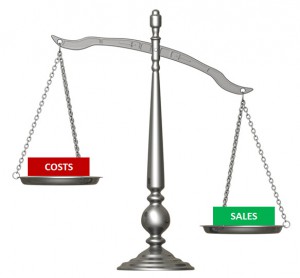Lean Should Be Part Of Your Growth Strategy
Lean is about waste elimination right? But to what end? The Toyota Production System (TPS) promotes eliminating waste in the pursuit of higher quality, lower costs and improved delivery with empowered employees. Yet, what is the ultimate objective? If you have “all of the above”, these are several things you don’t need to worry about as you pursue new customers and new markets. In our view, Lean is the ultimate strategy for growth.
Beyond Cost Reduction
In partnering with clients on Lean initiatives around the world, we often find that people equate “waste elimination” with “cost reduction.” This mindset is a cultural response to working in departmentalized operations, plants and processes that are measured as cost centers. Since most employees are not directly connected to generating revenue, their contributions to financial performance are only seen through cost and budget statements. This “cost reduction” view is sustained when organizations measure the success of their Lean programs based on savings from individual projects, Kaizen Events and employee involvement activities.
Don’t get us wrong. Organizations expect their Lean programs to deliver bottom line results, and they should track the returns from each Lean activity being conducted. However, there is much more to gain if they can transcend the cost reduction view and understand that Lean can be a powerful growth enabler when applied strategically to the business as a whole.
Growing the Bottom Line
Eliminating wasteful activities allows organizations to get work done with less effort. It’s also proven to increase output for the same effort. For example, one of our clients recently set out to improve its outside sales process. This was a cumbersome process involving documentation and approvals through the corporate office, extensive reporting and multiple trips to prospective customers to close a sale and / or to follow-up on billing issues. Upon conducting a highly focused workshop (Kaizen Event), a cross-functional team identified ways to reduce paperwork, eliminate steps, and prevent errors / exceptions.
 As the team began calculating the cost savings of the new process, an “ah ha” moment occurred. The Director of Sales jumped up and said, “Wait, we are looking at this all wrong. What we have really done is create an opportunity for all of our sales representatives ― in every territory ― to spend an additional 10% of their time meeting with prospective customers. This has the potential to grow the company’s bottom line far more than cost reductions. Let’s project the value of that growth and go for it!”
As the team began calculating the cost savings of the new process, an “ah ha” moment occurred. The Director of Sales jumped up and said, “Wait, we are looking at this all wrong. What we have really done is create an opportunity for all of our sales representatives ― in every territory ― to spend an additional 10% of their time meeting with prospective customers. This has the potential to grow the company’s bottom line far more than cost reductions. Let’s project the value of that growth and go for it!”
Managing the Value Stream
Stated another way, Lean can be applied to increase revenue without proportionally increasing costs. For instance, let’s say there’s a manufacturer that is starting to recover from the recession. Orders are increasing, but the product mix is less predictable. In this situation, what’s the most effective growth strategy?
Manufacturing operations can be viewed as a stream of value-adding processes that create a product for sale to the customer —known as a value stream. Accepting that a value stream is no more effective than its weakest process, the best strategy for growth is to progressively improve those areas that will increase the output of the value stream as a whole. For example, doubling the productivity of a single process in the middle of a value stream does not necessarily increase the total output of finished product for customers.
Lean activities must be prioritized to progressively and continually improve quality, eliminate wasteful actions, re-balance work, and reduce causes for wait times. Attention needs be placed on continually improving the next constraining area. It’s not enough just to increase volume, as it just adds inventory (not profits). In fact, producing too much of the wrong product — and not having the product the customers want, when they want it — will reduce profits.
In the end, what adds more to the bottom line?
- Increasing sales by 10%, without adding labor; or
- Pursuing a 10% reduction in labor, while maintaining sales
The answer is a simple. In addition, accelerated — more substantial — growth can be achieved by continuously improving quality, cost and delivery at a faster rate than the competition.





